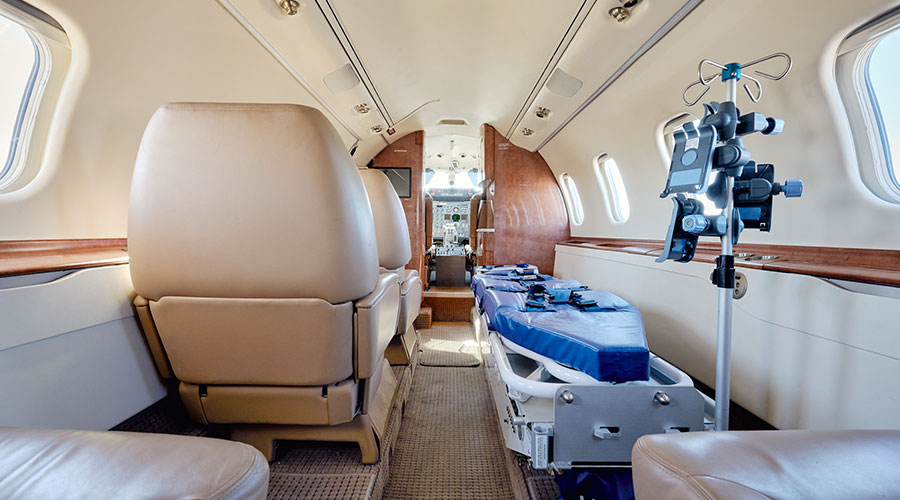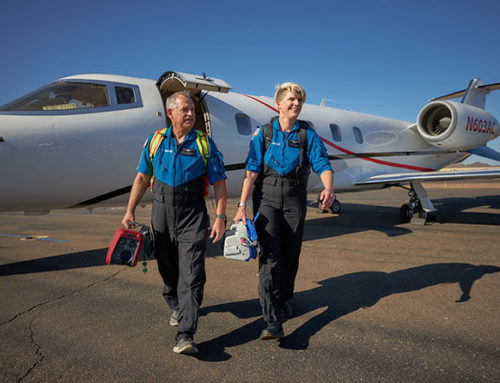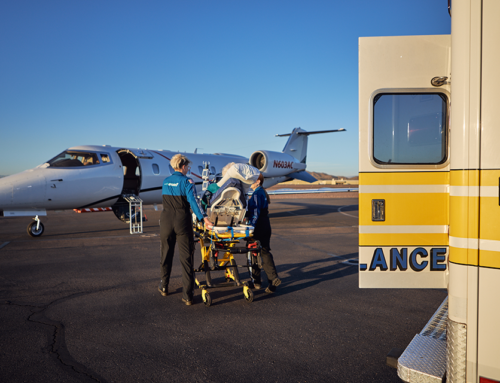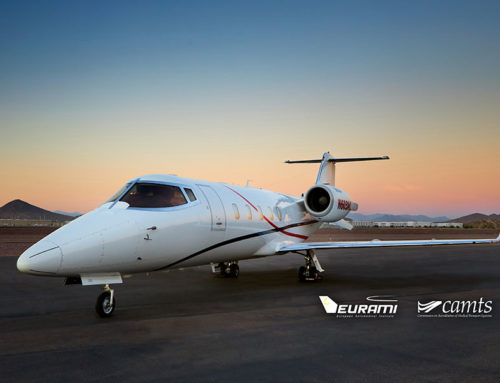Our education and training difference at AirCARE1
I am often asked this question, “What makes education and training stand out at AirCARE1?” For some in the industry it might take them a minute of comprehensive thought to come up with a valid and non-cavalier response. For me it’s an instant response. My response – Education and training is done differently at AirCARE1 because our Medical Director is integrated with the medical crew and flies as a crew member on our missions.
Let’s quickly define Medical Director. In a healthcare environment the Medical Director is responsible for medical supervision and overall regulation of all medical facets that may affect the institutional healthcare system. This is mostly accomplished by just signing off on dedicated policies and procedures. At AirCARE1 our Medical Director goes far beyond the common Medical Director duties. He not only signs off on our policies and procedures, but he actually writes, maintains, and updates them himself based on real time cases. Additionally, he is available to the medical crew 24/7 to answer questions and offer his personal online medical direction day or night. Lastly, and possibly the most unique difference with our Medical Director, is his role in flying as a crew member. In our industry, adding a flight physician to a medical transport is common – either because of specific patient needs or requirements made by the travel insurance company. Our Medical Director, or flight physician, flies on our medical transports as one of us, which is a little bit different. Instead of in combination with a two-person medical crew team based on a requirement, he willingly flies with us in the Nurse, Paramedic, or respiratory therapist role. He does this to enhance our team’s abilities as well as his own.
Rather than hearing from me why our Medical Director elevates our education and training, let’s hear directly from him – my crew member and friend, Doctor Kevin Kirkpatrick. Let’s dive in with a quick Q&A with Dr K.
Why do you Fly?
I have always had a love for aviation and medicine. Working and flying with AirCARE1 allows me to do both. It’s a dream job for me and a perfect fit for my passions.
When did you start flying?
I have been the Medical Director and a flight physician with AirCARE1 for over 15 years. I was fortunate enough to get involved early on and be able to watch this company grow into what it is today and play my part in it.
How is education and training effected by your unique role?
Education and training are extremely important to me and the company. In my unique role I have the opportunity to be involved in every patient flight, whether I’m flying or not, which allows me to actively update our methods and train the team accordingly. There are a lot of unique things in what we do, and for the benefits of our patients as well as our own crew members it is essential that we stay at the top of our game in knowledge and skills so that we are prepared and can provide the highest level of care.
What are three things that you changed regarding education and training once you started flying?
Flying as a crewmember gives me a deeper insight into the issues that our medical crews encounter, and that helps me to really understand where additional education and training is needed for our crew. For instance, aside from the additional training required for aviation medicine in general, flying as we do for long-range critical care, often cross-country or internationally, we routinely deal with issues that shorter range services may not encounter. Therefore, additional long-range factors our team needs to be prepared for are things such as adequate O2 and other medical supplies for the flight, language, cultural and legal barriers, customs, and fatigue. That’s why we put into place components of our education/training program shown as follows.
- A monthly continuing education program with didactic presentations to be completed prior to attending the meeting by means of online tests
- A presentation by me at each monthly meeting that might cover a case scenario, a topic we need to brush up on, or other teachings of my choice which I feel may be pertinent at that time
- An annual “Trauma Day” during which we perform all our equipment competencies; bag tests; demonstrate, practice and test on a multitude of advanced skills; and cover additional didactic presentations with testing.
Did any of your ideas and methods change in your practice as a physician at home once you started flying?
As I fly and come across new issues, or my medical crews come across them, I am quick to address them with new training and new protocols. I also encourage my medical crews to come to me with recommendations on things they’d like to see changed in our protocols. Our medical crew are all very knowledgeable and often have great ideas. That being said, I always tell them not to be offended if I don’t agree with them but will tell them why. I always try to do what makes the most sense for our services.
With our unique operating environment, what do you find to be the most difficult to incorporate in your trainings, educations, and simulations.
I think we do a great job with teaching medical skills and knowledge, but the hardest thing to really teach are the nuances and logistical issues that go along with flying internationally, especially south of the US border into Mexico and other central and south American countries. It can be very difficult sometimes. Training definitely helps but building experience with it while flying with more experienced and seasoned crewmembers is what makes all the difference. Part of our new hire orientation includes training flights with senior medical crew members and that has been crucial for our new crew members to be trained for when they lead their own flights.
At AirCARE1 we pride ourselves as a company for our extensive training and continuing education. We believe our crew is the most experienced, trained and educated in the industry. A key to our successes is our exceptional leadership that is always accessible, reliable, and most importantly non-threating to the information that is brought to them. Education is different when it is presented in that way. With our approach to training and education, our crew is prepared to provide the highest level of care to our patients, which is our number one priority.




